Seven Days of Dream Car Garages: Day Five by Sami Haj-Assaad

Make no mistake, this IS as much of a bucket-list as it is a dream list of cars. I’ve yet to drive many of these sublime examples of motoring, but if I was ever given the opportunity, I’d jump at it, potentially re-scheduling a birthday party, religious holiday or anniversary to get a chance behind one of these vehicles. If (or until) these opportunities arise, I’ll have to just dream.
First on my list is the 2014 Porsche Cayman. A coupe based on the latest Porsche Boxster, I’m convinced that this will be a car more suited to my tastes. With the engine roaring just behind the front seats, rather than over the rear axle like 911’s, the Cayman is a fantastic car for when the road gets windy.
Naturally, my preferred Cayman is the 325 hp, 3.4 liter equipped Cayman S, which makes the sprint to 60 mph in 4.4 seconds. This means that it’s just a step behind last generation 911. Like the new 2013 Boxster, the Cayman is lower, wider and longer than the older generation model. Additionally, the lightweight materials help with performance and grip. I also melt every time I see that gorgeous tan interior.
While I gave up my own Mercedes earlier this year, I’ve always had my eyes on another, especially a hopped up AMG version. However, as opposed to grabbing the latest and greatest AMG car from Affalterbach, I’d prefer the subdued, boring look of the W211 models. Despite it’s understated politician look, the E63 AMG is a killer, with its naturally aspirated 6.2L engine that put out 518 hp. That much brawn helps the lame-looking E-Class jet to 60 mph in under five seconds, with a top speed of about 200 mph.
The E63 AMG is a rocket with complete anonymity. Not only will other drivers not know the power hidden underneath the hood of the E-Class, other passengers will love the gorgeous designo interior. For me, this is the car I can safely drive, with no other drivers egging me on, or causing a ruckus to get a closer look at it.
Here’s another mid-engined, rear-wheel drive car in my dream garage, this time from the Japanese automaker Honda. Sold as an Acura in North America, I remember this car because it is one of the few from-scratch supercars built in my lifetime.
Back in 1990, there was no sporting heritage of the NSX’s pedigree to be found, and when the car landed, it was a sight to behold with its slick design and focus on Formula One technology. When it debuted, no one heard of an all-aluminum monocoque chassis in a road-car, or an 8000 rpm redline. Oh and that paint-job? A lengthy, OCD-worthy 23-step process, so even well used examples on the road today shimmer in the sunlight.
It’s also worth mentioning that this was a car that had Ayrton Senna weak at his knees. Senna is said to have helped test the NSX, and even helped convince the automaker to stiffen up the chassis a little bit.
The NSX is so important that it’s coming back to help Honda regain its sporting reputation, and the whole world can’t wait to see how Honda innovates and puts a spectacular nameplate to good use. The old NSX though will be plenty of fun to take around a track and show up the latest hot-shots in the newest cars.
The inclusion of the 240Z on this list is purely a selfish one. There isn’t much about the 1970 Datsun 240Z that’s particularly drool worthy. It was a small, lightweight, sports car that just looked so, so cool. What it did right was put Nissan on the map in North America, especially during a time when the American automakers were on the top of the game.
However, there really isn’t another car from Nissan that does what the 240Z did. The 370Z and GTR are plenty fast and fun, but they just don’t reward the driver. The 240Z (as well as the 260z, and 280z) were special because they created an enthusiast culture that’s genuine. It’s a little nostalgic thinking about the 240Z and seeing the connection to the current no-frills, fun to drive FR-S. I’d drive the 240Z just to remind myself of the genuine sports cars of the past generations.
There’s a lot of special cars on this list, but the Audi Ur-Quattro is probably one of the most legendary. With 23 World Rally Championship wins, a Pikes Peak win, an International Motor Sports Association win and complete domination of the 1989 Trans Am season, the Quattro was a monster of a rally car. The turbocharged five-cylinder engine was also legendary, making a unique noise that is just iconic of Audi’s rallying heritage.
The production car is a rare sight to see. Out of the mere 763 vehicles bought in North America, it’s hard to find one in still road-worthy condition, or one that hasn’t been modified for racing. Regardless, a running and capable Ur-Quattro seems like the right car for when the heavy winter lands!
Here’s where things get a little crazy. This ’60s Lambo, with it’s mid-engined V12, is an absolute sight to behold. Forget the cheese-wedge-like, Picasso-ish Countach, the Miura is the car for me, it’s sexy curves an open invitation to explore the 350 (or more) horsepower.
A Bertone design, the Miura is a classic example of Italian passion with the design being finalized before checking if the engine would even fit. My personal favorite would be the P400SV, which didn’t have the tacky eyelash look. Back in the ’70s the Miura could hit 60 mph in under 7 seconds, but who cared how fast it was, just look at it!
Another classic makes my list, this time the former fastest production car in the world, the 1954 Mercedes-Benz 300SL. A car that is known for its unique gullwing doors (which came back in the new Mercedes-Benz SLS AMG) the 300SL was capable of hitting 160 mph, in the 1950s!
That incredible top speed is achieved by the cars direct injected 3.0-liter inline six, which made 212 horsepower. Combine that with the 300SL’s aerodynamics and Mercedes-Benz had a classic and iconic vehicle on its hands from the moment it was made.
The last classic on this list is the iconic Toyota 2000GT. Made for only a short period of time from 1967-1970, I believe that the 2000GT was a revolution step for the Japanese automotive industry. Finally, Toyota (whose reputation was, and still is built on cars like the boring, predictable Corolla) was capable of making a car that could go toe-to-toe with the performance giants from Germany, and the exotics from Italy.
Back in 1967 critics loved the car, but even today, I see it as a reminder that everyone, needs to express themselves, and when it comes to a pure product of passion, nothing can go wrong. Today the 2000GT is widely recognized as the first highly collectible Japanese car, with auction prices raising up to the levels of European and American classics. The gorgeous 2000GT made a statement in terms of motorsport as well, with the car winning the Fuji 24-hour race and coming in third at the 1966 Japanese Grand Prix. Also, American motorsport legend Carrol Shelby had a pair of 2000GT’s to compete with, which essentially proves the point that Toyota did it right back in the ’60s. Even cooler was the open-top roadster model, which was featured in the James Bond movie You Only Live Twice.
I can’t get the image of the 1996 Dodge Viper out of my head. With its white-stripes on blue paint-scheme, it was a jaw dropping sight to behold. While the Viper took a break in 2012, it came back in 2013 with the SRT team, bringing with it a modern take on the original Viper motif
The Viper has an incredible origin story, akin to a super-hero comic, with 85 hand-picked engineers to make up ‘Team Viper.’ Amazing contributors popped out of everywhere, with famous names populating the Viper’s credit reel: Lee Iacocca, Carrol Shelby, Bob Lutz, and even Lamborghini played a part with the Viper’s birth.
Honestly, I’m a little intimidated to drive the older Vipers. Too many journalists telling campfire horror stories come up when discussing the earlier generation vehicles. Today though, the Viper is a bit tamer to drive, and still features a fiesty exterior and soundtrack. With it’s all-aluminum 8.4-L V10 engine making 640 horsepower and at 600 lb-ft of torque, the Viper really has some bite. The ultimate SRT Viper in my eyes is the Launch edition, which mirrors the look of the earlier Vipers. I saw this in the flesh at Pebble Beach, and couldn’t take my eyes off it.
Finally, one of my favorite cars right now is the Lexus LFA. Looking at the other choices on my list, the LFA is a bit of an obvious choice. It was a car that Toyota took their time with, and used the same super-car formula that started with its classic 2000GT. With it’s ultra-modern looks and design, as well as unbelievable performance, the LFA manages to combine technology, reliability, style and character into one car, something that very few Japanese automakers can claim to do (Nissan GTR, I’m looking at you).
Just like Toyota did with the 2000GT, the LFA was a joint project with the team at Yamaha, but this time to finely tune the supercar’s powerplant. The truth is in the way it sounds: every time I hear the LFA, I get a paralysing sensation, like a a spectre just passed through my ears, with all the hairs on the back of my neck springing up in full attention.
It’s simply a brilliant car to look at, hear, and I imagine to drive. I don’t know if I’ll get a chance to drive one, but I wake up every morning breaking a far too enjoyable dream of actually being behind the wheel of one, (no wonder I’m such a morning person!)

Sami has an unquenchable thirst for car knowledge and has been at AutoGuide for the past six years. He has a degree in journalism and media studies from the University of Guelph-Humber in Toronto and has won multiple journalism awards from the Automotive Journalist Association of Canada. Sami is also on the jury for the World Car Awards.
More by Sami Haj-Assaad


























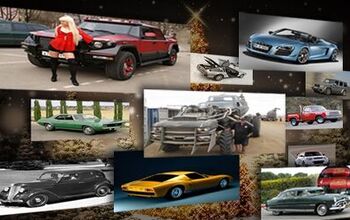
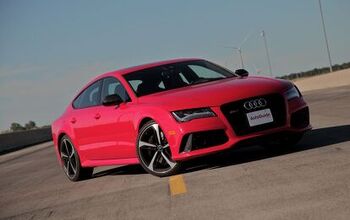

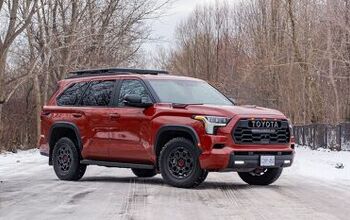




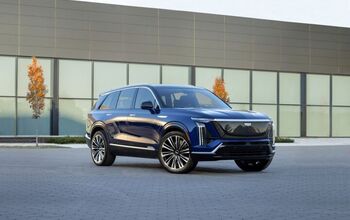
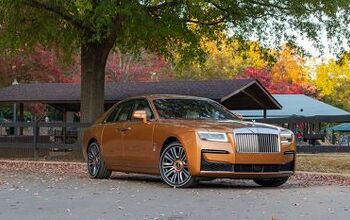




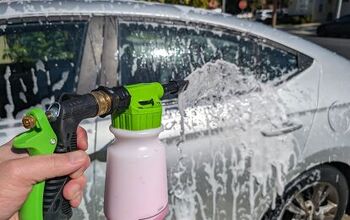
Comments
Join the conversation
Why was the open top (one off because Connery was to tall for it) cooler? The coupes lines are perfect.
Ford Raptor http://gt36.blogspot.com/2012/11/ford-raptor.html Mercedes Ener G http://gt36.blogspot.com/2012/11/mercedes-ener-g.html Ford Focus RS500 http://gt36.blogspot.com/2012/11/ford-focus-rs500.html Mustang Boss 302 http://gt36.blogspot.com/2012/12/mustang-boss-302.html Toyota Avalon http://gt36.blogspot.com/2012/12/toyota-avalon.html